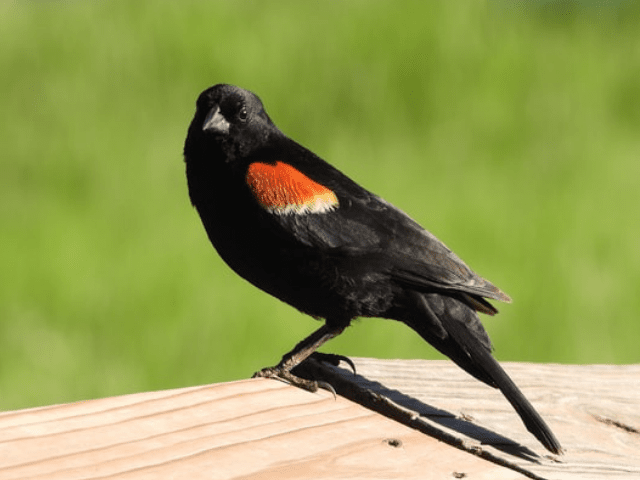When traveling to different places, we do not only look for stunning landscapes or breathtaking views. It's hard not to notice when the seemingly majestic birds soar high in the skies.
So...
If you're a birder who wants to know what birds in Alabama you'd probably encounter there, this article is for you. It will serve as your handy guide in taking the guesswork out of what species you'd most likely find in Alabama bird feeders.
Bird identification would be so much easier if you knew what to look for, and with that said, may you find all information in this article helpful on your next birdwatching activity.
Most Common Bird Species You Will Find In Alabama
Alabama is a state that is reputable for its excellent bio-diversity. It has calm weather that allows healthy growth for plants, thus, giving various bird species a secure habitat. During spring and fall, Alabama is home to Neotropical migrants, and it has year-round residents as well.
Here are several interesting species you might want to know more about:
1. Northern Flicker
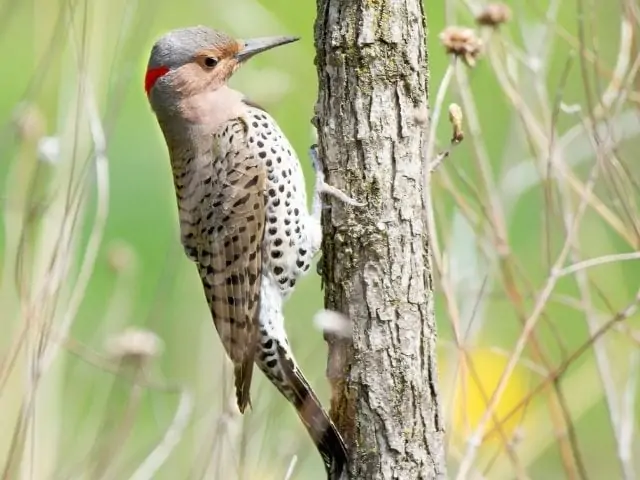
Among the wide range of birds in Alabama, the Northern flicker is the most famous of all. It is Alabama's official state bird, together with the Eastern wild turkey. You will frequently see this handsome bird foraging the ground instead of trees.
Take the case of a Northern flicker, for example, which you will least likely see on a backyard feeder since it prefers to eat ants. It devours more ants than any of the other birds in Alabama, whether they're red or black.
This Alabama bird is also well-known as the yellowhammer because of its bright yellow underwings. Although their kind coming from the west have theirs red than yellow. Such a distinct feature can help you tell the two sub-species apart when they are in flight.
2. Ruby-Throated Hummingbird
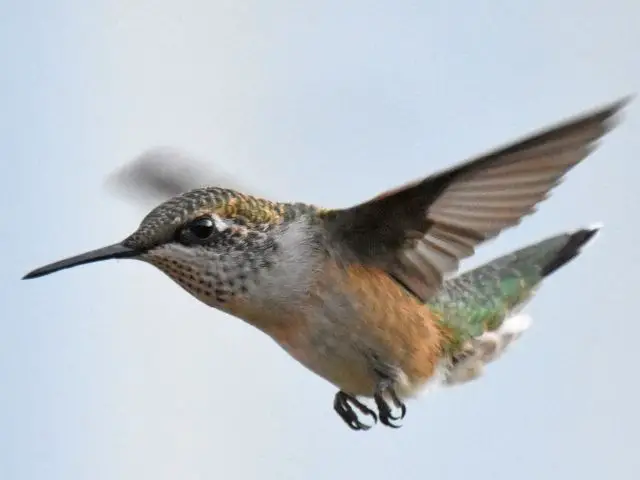
The ruby throated hummingbird is among the well-known Neotropical migran
ts that you will mostly see feeding on vibrant, red flowers with tubular blossoms. It's also a frequent visitor to hummingbird feeders and loves to consume wildflowers' nectar at forest edges.
Alabama's rich botanical diversity attracts this hummingbird, so you will likely see many of them passing through this area during migration. You can effortlessly identify this bird with its endlessly appealing look. It has a long bill, and its topmost part has a metallic green shade.
3. Yellow-Rumped Warbler
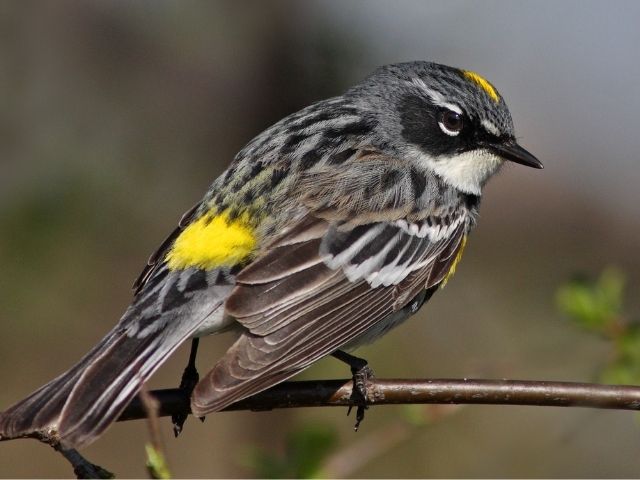
Do you ever wonder what that bird you often see sharing a drink with a tanager or the one enjoying the birdbath so much is? Well, that could be the yellow rumped warbler! That might be the same bird you often see in your backyard in winter.
There's a noticeable abundance in this warbler's population in their winter habitats. If you're looking for this bird, you should know it has plumage variation too.
The male eastern birds are bluish-gray in spring and summer with white throats and black patches on their faces. Contrarily, the male western birds would differ with their yellow-colored throats and white bellies, while female spring migrants have brown, duller shades.
respectively. But please don't let all these variations confuse you. The only thing you need to look at is that brilliant yellow rump on the year-round birds.
4. Red-Bellied Woodpecker
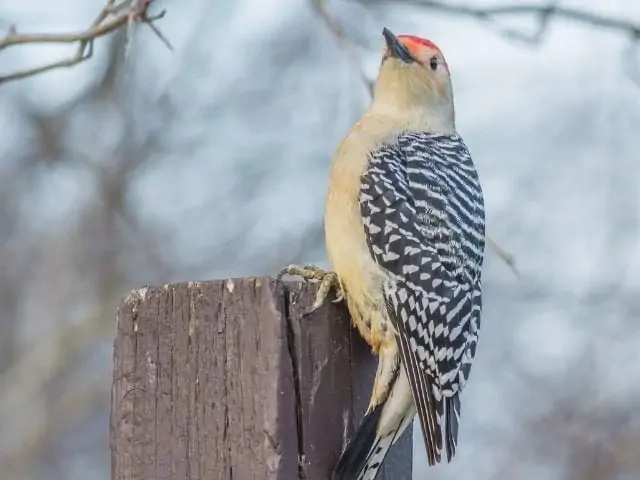
The red bellied woodpecker is another familiar bird with a voice similar to its relative, the red-head woodpecker. The bird also has a white-barred tail, similar to a Gila woodpecker.
This woodpecker is a native cavity nester that you would sometimes encounter carrying food to their nestlings. However, there's a greater chance to see its kind clamoring on suet feeders.
But due to the red-bellied woodpecker male's brilliant red stripe from the bill to the nape, many people confuse this bird for the red-headed woodpecker.
5. White-Throated Sparrow
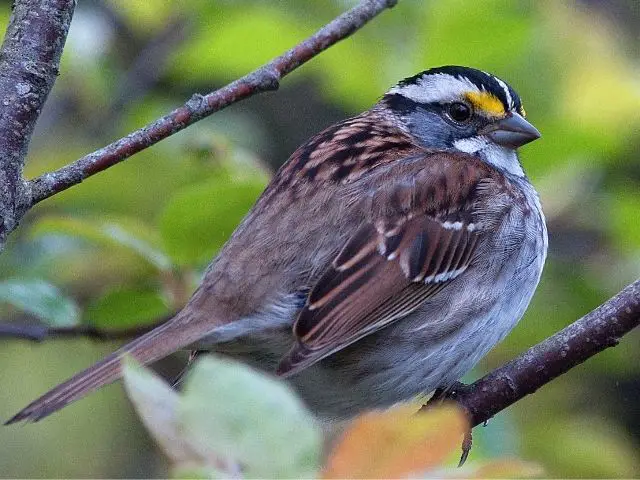
It sounds like a rhythmic whistle similar to a familiar cue, "Oh sweet Canada." A short melodic pitch with a pretty long ending that almost lasts for two seconds.
You might have a chance of occasionally witnessing this bird flocking with an American redstart, a typically solitary bird when foraging on winter grounds. You can make this lovely creature feel more at home by setting up your backyard feeders near some shrubs.
Seasoned birders probably noticed how this sparrow comes in two color forms—the first one with a white stripe above its eye. The other form comes with a tan band above its eye instead of white. It often searches for seeds, fruit, insects, buds, and various grasses on the ground.
6. Red-Winged Blackbird
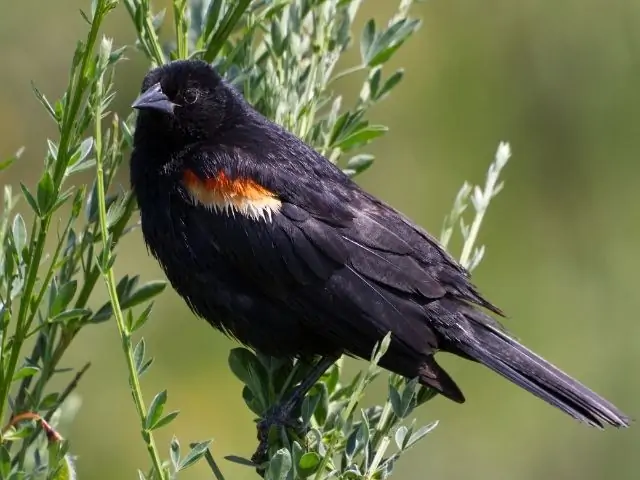
Despite being a common bird in suburban areas, many would notice that the red winged blackbird likewise resides in wetlands throughout Alabama. However, grassy areas are this bird's favorite habitat.
It's an adaptable migratory bird that is comfortable nestling in large flocks that start disappearing towards the late summer. When they reappear, this species will head Southbound. You will encounter about 24% of this species in winter and 18% in summer.
The male's black feathers with some vibrant red shade on the wings and yellow spots on the shoulders are enchanting. In contrast, the females have a combination of red, black, and brown in prominent streaks all over their bodies.
7. Swallow-Tailed Kite
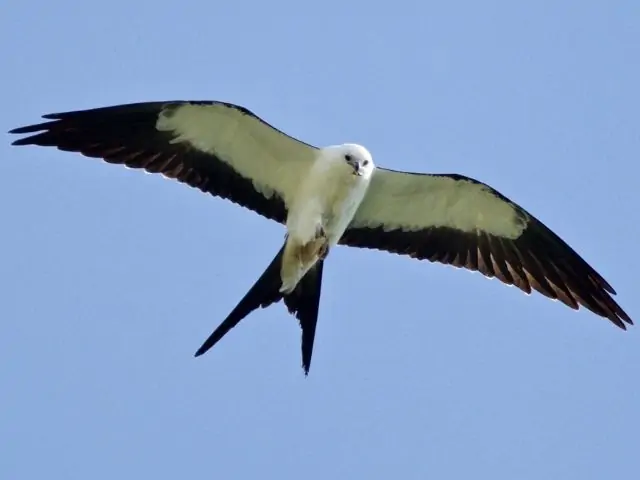
If you notice some birds in Alabama with a forked tail during your next birding activity, they are the species called the swallow tailed kite. Its black and white feathers, together with the bird's graceful flight and remarkable agility, are among its identifiers.
Breeding occurs primarily during the summer months for kites, which are migratory birds of prey. During this season, you will encounter their kind plunging and spinning while looking for dragonflies or small mammals in the forest canopy.
8. Carolina Chickadee
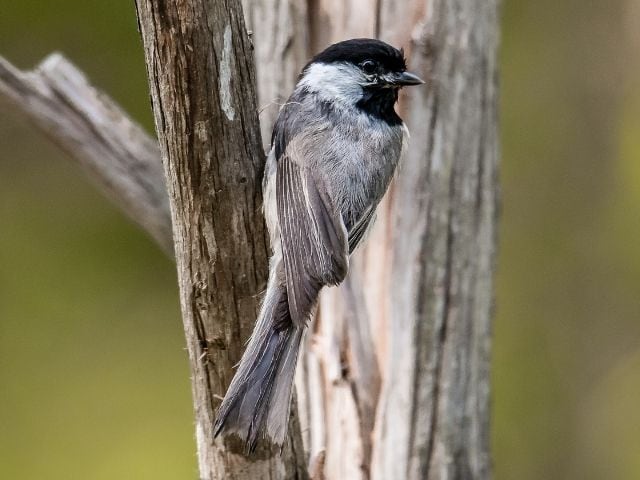
The Carolina chickadee and the black-capped chickadee are common backyard birds in the North and South. Both also have identical looks. You can only tell the difference with their voices; their constant chattering will undoubtedly catch the attention of any bird lover.
Moreover, this bird shows a noticeable inclination for sunflower seeds, making it frequent backyard bird feeders.
It is not surprising that this chickadee is among backyard birds with a reputation for finding newly installed feeders first. Among the vast array of birds in Alabama, you will also have no trouble identifying this species.
With its black head and throat, primarily gray body with white underparts, and pale-colored flanks, you will immediately notice this bird.
9. Brown-Headed Cowbird

There's no mistaking a brown headed cowbird for its notoriety, as many bird watchers recognize it for being a brood parasite.
Instead, the females would devote the entire spring and early summer to looking for a roosting ground where they could lay their eggs. They would choose the nest of other birds more willingly than make their own.
A willow flycatcher is one of the many birds that fall victim to a brown headed cowbird. It would steal the flycatcher's nest, remove its eggs, and replace them with its own.
Further, this species loves to eat an insect it catches while in-flight or feeds on fruit during winter. The cowbird is also highly adaptable in its habitat, mainly dwelling on woodland edges or suburban backyards.
10. Brown-Headed Nuthatch
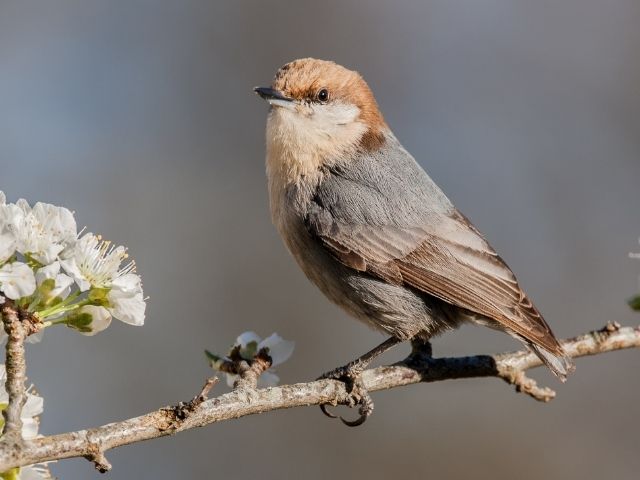
There are several birds in Alabama that birdwatchers can only find in the pine forests. One of them is the brown headed nuthatch. This nuthatch is a small bird that prefers eating insects and wanders in noisy flocks with downy woodpeckers, titmice, and chickadees.
You can spot this bird species effortlessly with its warm brown head, pointed bill, and a combination of gray and white underparts.
It has a declining population; hence, this nuthatch is not a common species around Alabama. But if you're lucky enough, its kind is also a backyard bird that might surprise you at suet-filled bird feeders. Just don't expect it to stay longer, as it will most likely return several times to take a bite and fly with their chunk of food.
While we only featured ten species, several other birds exist in Alabama. These birds include the barn swallow, white breasted nuthatch, bald eagle, and even wild birds, such as the blue jay.
Helpful Tips On How To Attract Birds In Your Backyard
Bird watching is one of the most gratifying experiences in life. Humankind throughout history and nearly every culture appreciate various bird species.
So with Alabama being one of the US states with excellent biological diversity, it came as no surprise that the place attracts exciting inhabitants.
Hence, if you wish to have any of the state's backyard birds visit your garden, here are some friendly tips for you:
-
When creating your bird garden at home, choosing the plants to have in your space is something you should consider.
You can try planting native trees and shrubs, as doing so would be the most affordable way of providing birds with food sources.
The types of food that birds eat can vary from one season to another, so make sure to consider that as well. Some native bushes that can be a good food source include elderberry, blueberry, spicebush, and more.
-
A delightful array of bird feeders and houses will make your garden a welcoming place for flying visitors.
It would be best to have particular seeds depending on the bird species you attract and the season.
As you already know, some of them are migrating birds, and others are year-round residents. So, during the cold season, choose bird seeds that will attract winter birds to your area.
You can also add supplemental bird foods, such as suet cakes, raw peanuts, safflower seeds, sugar water, black-oil sunflower seeds, and more.
-
Include a spot that will include a clean water supply for the flying visitors.
These birds would find your garden irresistible if it has a steady water source for their drinking and bathing needs.
Streams and backyard ponds are ideal, or you can also set up a small fountain and several birdbaths in different spots in your garden. This water source should be under a cover to maintain its cleanliness but ensure that it will also be far from the reach of predators.
The Best Way To Make The Most Of Your Birding Experience
There's nothing like bird watching as a pastime. Once you learn how to bring birds closer to you, you will enjoy the experience to the fullest.
Having them in your backyard will give you more birding opportunities, which means more chances to see their beauty. But to be more efficient in learning about these winged creatures, here are some things you also need to consider.
Birds are very perceptive of their surroundings, so you need to have stealth movements to avoid startling them. They also have excellent hearing, so it would help to also move in silence.
Once you master this kind of movement, birds will start showing up in your garden. These astonishing creatures will provide you with hours of fun and excitement.
Observe how they eat, drink, scuffle over territories, as well as their food and nesting preferences. Discover how they differ in sizes, plumages, and behavior to help you identify them with ease. You can journal and classify the birds according to their sizes, color, and flight mechanisms. All these are handy for better bird identification.
Invest in several pieces of equipment like binoculars or any other photographic gear to help you watch these birds in more detail.
And if you haven't started yet, here are more reasons why you should start birdwatching:
Frequently Asked Questions
What are Alabama’s common backyard birds?
One of the first few steps you need to consider in getting closer to any avian species is knowing which are backyard birds, specifically in Alabama. It will help you create the kind of environment that these birds cannot resist.
Maybe you can try setting up a small fountain, offering supplemental feeding, planting some trees, and building them a secure shelter or a nest box. Some of these frequent backyard visitors can be year-round residents, and some are also migratory birds.
You can find them in open woodland, suburban neighborhood, etc.
Here are several of the most common backyard birds in Alabama:
- Northern cardinal
- Northern mockingbird
- Blue jay
- Carolina wren
- Mourning dove
- Carolina chickadee
- Red-bellied woodpecker
- Tufted titmouse
- Indigo bunting
- American crow
- Eastern bluebird
- Yellow-rumped warbler
- House finch
- White-throated sparrow
Which birds in Alabama love to eat fish?
A belted kingfisher, the only widespread bird species of its kind in the United States, loves eating fish. You can see it using its large-sized bill to feed on an insect, but this creature is most fond of a bird habitat near an aquatic environment.
What songbirds can you find in Alabama?
We have many bird species that have made Alabama their home at one time or another. One hundred of these species are small, perching songbirds that birders recognize as passerines.
More than half the unique bird species worldwide belong to this group, including the sparrows and finches. Here are several of them which you can find in Alabama:
- Northern mockingbird
- Carolina wren
- Summer tanager
- Scarlet tanager
- Barn swallow
- Purple martin
- Red-breasted nuthatch
- Evening grosbeak
- Orchard oriole
Final Thoughts
In conclusion, several bird species find comfort in making Alabama their sanctuary. It's not surprising at all considering the state's biodiversity in offering these lovely creatures everything they need to survive.
Almost everything about the place offers hobbyists extensive birding opportunities. From the slow-moving streams to the hardwood forests, name it, Alabama is beyond doubt heaven-sent for varying bird watchers across the globe.
With all the information you have learned about avian life in Alabama, we hope you will have more fun on your next birding trip. May the beauty of nature and these eye-catching birds in Alabama give you the kind of relaxation you need.

